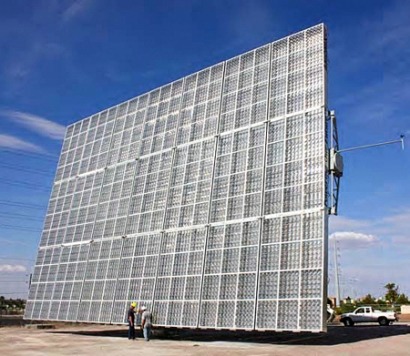Driven by emerging markets with high solar resources, the market for HCPV will grow to 697 MW in 2017, creating a system market worth $1.6 billion and a module market worth $700 million, reaching a system price of $2.33/W.
"HCPV has had very little success installing commercial systems to date. However, as markets shift due to subsidy cuts from distributed installations in low-DNI (direct normal irradiance) environments such as Germany, to large installations in high-DNI environments such as India, expect HCPV to grow at a faster rate than competing technologies," explains Ed Cahill, Lux Research Associate and the lead author of the report titled, "Putting High-Concentrating Photovoltaics into Focus".
Lux Research analysts evaluated the emerging solar landscape and the prospects for HCPV, which uses optics such as lenses to concentrate a large amount of sunlight onto a small area of ultra-high-efficiency photovoltaic cells. Among their findings:
- HCPV costs are coming down. HCPV systems will turn cost competitive with single-axis-tracked mc-Si (multi-crystalline silicon) in 2017, closing a 33% and 20% gap with fixed and tracked mc-Si systems, respectively. It also will gain cost parity with mc-Si for high-DNI, utility-scale projects in 2018. The cuts will come through lower shipping and labor costs, besides economies of scale.
- Funding is key to success. Well-funded companies that expand intelligently will drive the HCPV market. HCPV pioneer Amonix expanded too soon and too fast and has had to cut back; it struggles, and leaves the door open for emerging players like Soitec, SunCore, and SolFocus.
- Developers race to build most efficient solar cell. With Solar Junction's record-breaking 43.5% efficient cell and Spectrolab and Emcore scrambling to develop inverted metamorphic cells, the race to manufacture the most efficient solar cell is heating up. A steady roadmap to 45% efficiency in five years and 50% efficiency in 10 years is feasible.
For additional information:
Lux Research


